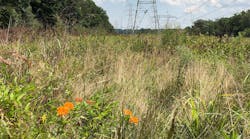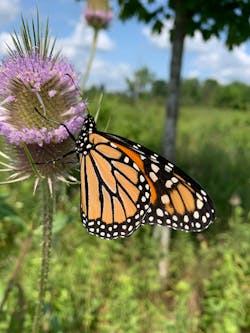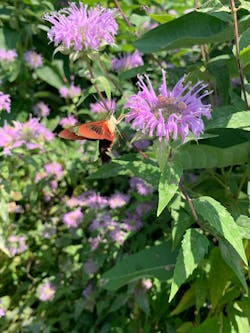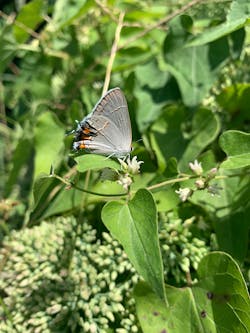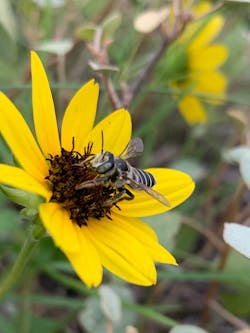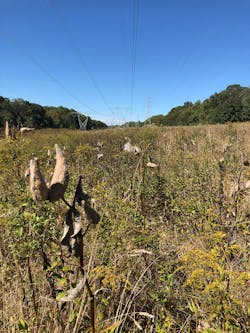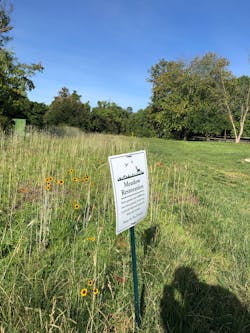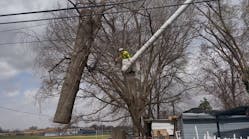Butterflies and Biodiversity
Not only will cultivating biodiverse ROW habitats support botanical and pollinator communities, but it is also likely to benefit utilities, too. This is especially important with respect to potentially qualifying for participation in certain wildlife programs.
As an example, utility lands qualified and enrolled in the Monarch CCAA program are exempt from certain limitations and regulatory restrictions surrounding the monarch’s population status — now and in the foreseeable future. That’s good news, of course, for utilities. Equally good, says Baker, is that utilities that opt to diversify ROW vegetation can improve habitat quality and build upon their sustainability initiatives.
“Not only is there the benefit of possibly becoming certified by various wildlife organizations like Monarch CCAA,” explains Baker, “but when utilities create a diverse landscape next to public areas, they can enhance the proverbial bang for their conservation buck by creating tangible evidence of goodwill for and within the community. The public can appreciate when a utility has cultivated a place where monarch butterflies, warblers and other wildlife are thriving. They may also enjoy other amenities, such as bike paths and walking trails that meander through ROW habitats.”
- Long-term reduction in maintenance costs: Over time, establishing and maintaining a stable community of appropriate plants requires less maintenance than traditional cyclical approaches.
- Increased employee engagement: When employees understand and appreciate that a habitat program benefits their community, the environment, and their company’s bottom line, they have a greater sense of pride that, in turn, causes them to become very engaged with both the process and the outcome.
Preserving the Natural Ecosystem
Traditional approaches to UVM typically involve reliability-focused controls and cost-effective vegetation removals to meet short-term compliance needs. IVM is a specialized component of UVM focused on using site-specific approaches to achieve multiple objectives — like diversifying vegetation to preserve the natural ecosystem while also achieving reliability, compliance and cost control requirements.
Benefits of IVM
IVM is proving to have significant and far-reaching benefits. Not only does an IVM program on a ROW promote safe, reliable and cost-effective electric power, according to the EPA, it also helps “reduce wildlife habitat fragmentation and allow species to be geographically diverse, remaining in areas they might otherwise be excluded.”
The Science of ROW Conservation
When it comes to stewardship, the more diverse the plant community, the better. That’s why assessing biodiversity and tracking it over time in relation to IVM practices is so important.
- Surveys to track the number and species and abundance of butterflies, bees and other pollinators
- Vegetation surveys that assess the number and type of floral (nectar and pollen) resources
- Counts of keystone plants that may be indicators of habitat health and quality
- Visual assessment of habitat features, such as snags, brush piles, bare ground and wetlands
- Scorecards to measure habitat quality and composition
- Invasive species presence
